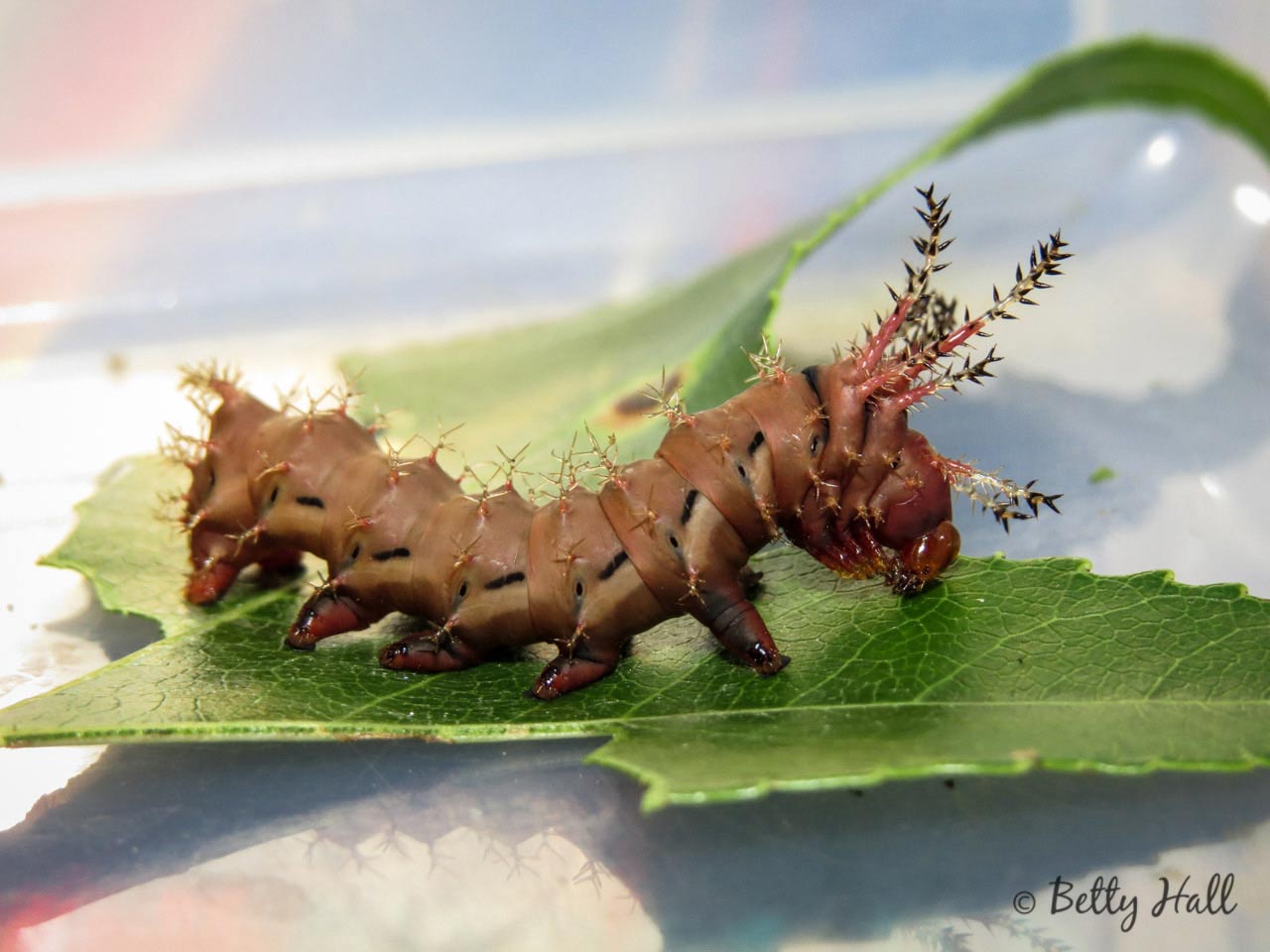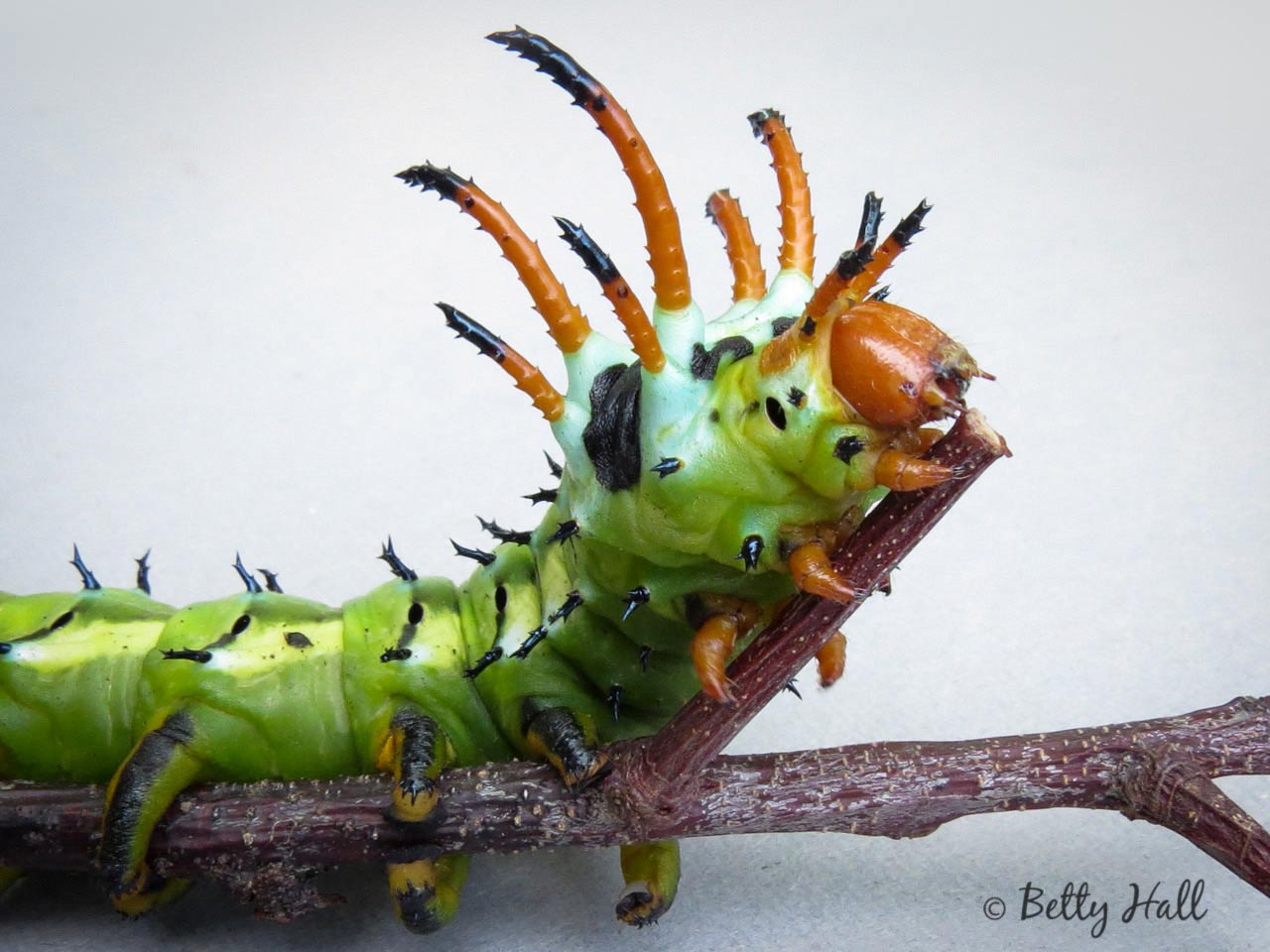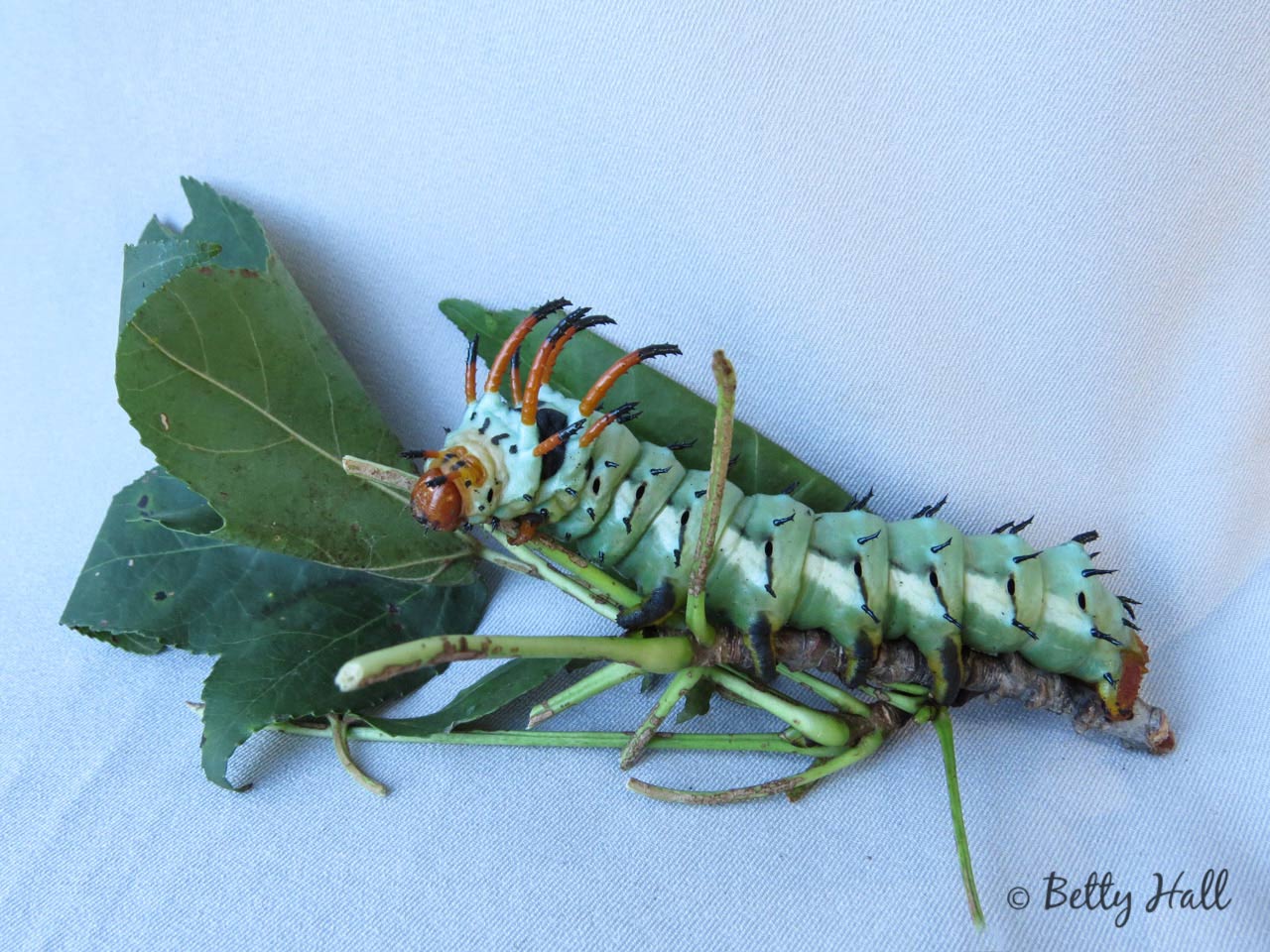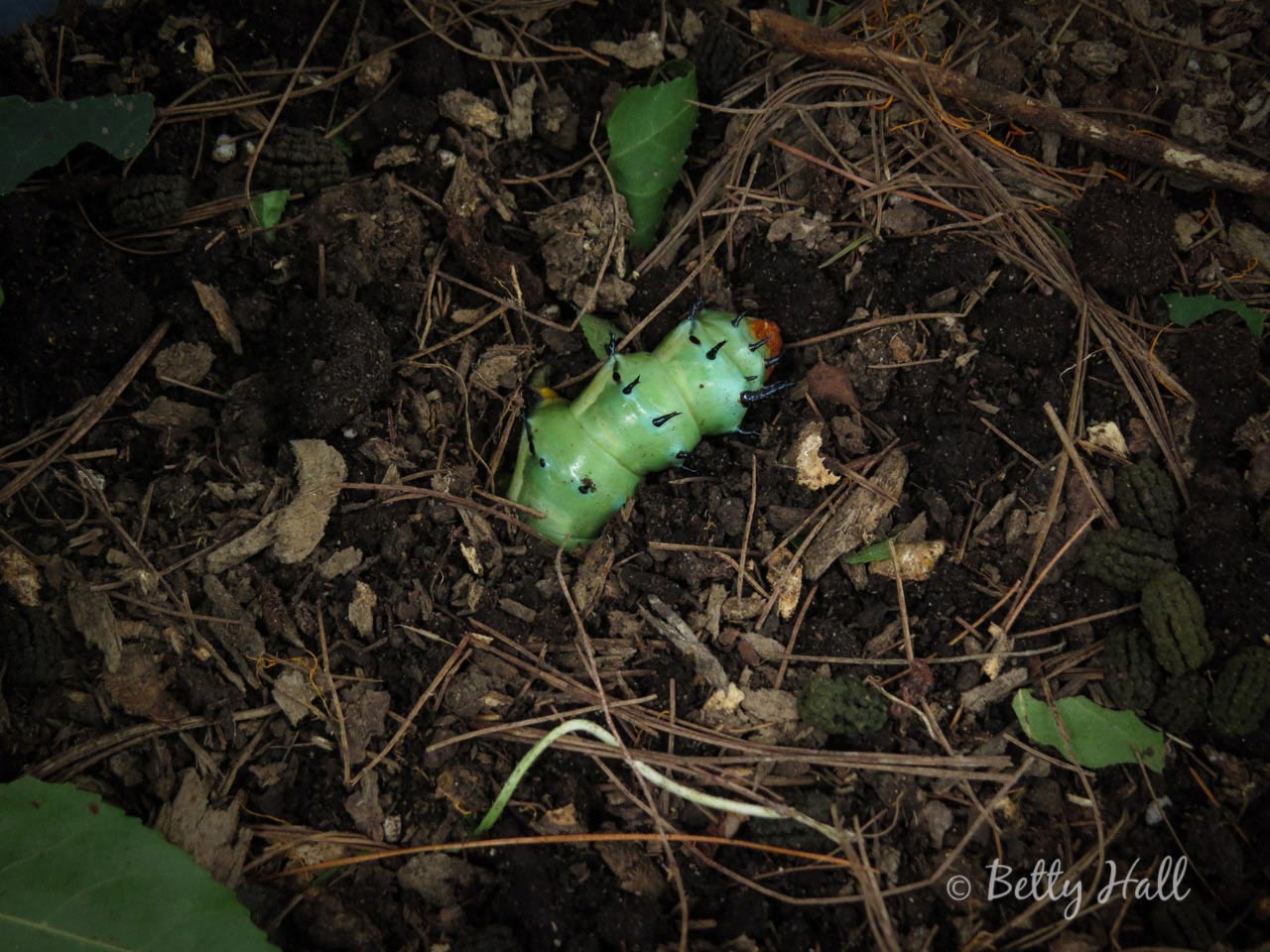In my latest caterpillar adventure, I raised a “hickory horned devil.” The name is enough to get most folks’ attention. Mine fed on sweet gum leaves and grew quickly. At about three weeks its horns were quite evident.
 The caterpillar shed its skin four times, getting larger each time. After a month, it molted a final time. It was 5.5 inches long and became bright green. At this point, the horns were especially prominent. Although they looked ferocious and were somewhat prickly, they were not at all harmful to touch.
The caterpillar shed its skin four times, getting larger each time. After a month, it molted a final time. It was 5.5 inches long and became bright green. At this point, the horns were especially prominent. Although they looked ferocious and were somewhat prickly, they were not at all harmful to touch.
 About a week later, it stopped eating, and the skin changed to a turquoise color.
About a week later, it stopped eating, and the skin changed to a turquoise color.
 Knowing this caterpillar makes its pupa underground, I prepared a container with six inches of soil. Within a short time, the caterpillar burrowed into the dirt where it will overwinter.
Knowing this caterpillar makes its pupa underground, I prepared a container with six inches of soil. Within a short time, the caterpillar burrowed into the dirt where it will overwinter.
 This was my first opportunity to watch a Hickory Horned Devil caterpillar through its life cycle, and it was a special treat. I’m now hoping to see a beautiful Regal moth (photo from Tumblr) emerge next summer.
This was my first opportunity to watch a Hickory Horned Devil caterpillar through its life cycle, and it was a special treat. I’m now hoping to see a beautiful Regal moth (photo from Tumblr) emerge next summer.


Awesome, Betty! A fascinating look at a very intriguing and beautiful creature. Thank you.
Fantastic photos Betty, and how exciting to see the changes as the caterpillar grew! We will all be waiting with great expectation to watch this amazing moth emerge. Thanks again for this glimpse into a world that is barely a rustle in the garden for most of us.
Most impressive! Thank you…
I love my education from my favorite teacher of what’s going on in her backyard! Never would I have know about the hickory horned devil caterpillar and I’m looking forward to what happens to it in the Spring.
Very nice photos. How did you find him, and did you know what it was when you found him? I mean, was he still in the egg stage? And does his egg look different from other eggs?
Wes, good questions. A friend gave me the caterpillar while it was still quite small so I don’t know anything about the eggs. According to Wikipedia, the eggs are 2 mm. in diameter, yellowish and oval but I’ve not been able to locate an image of them.